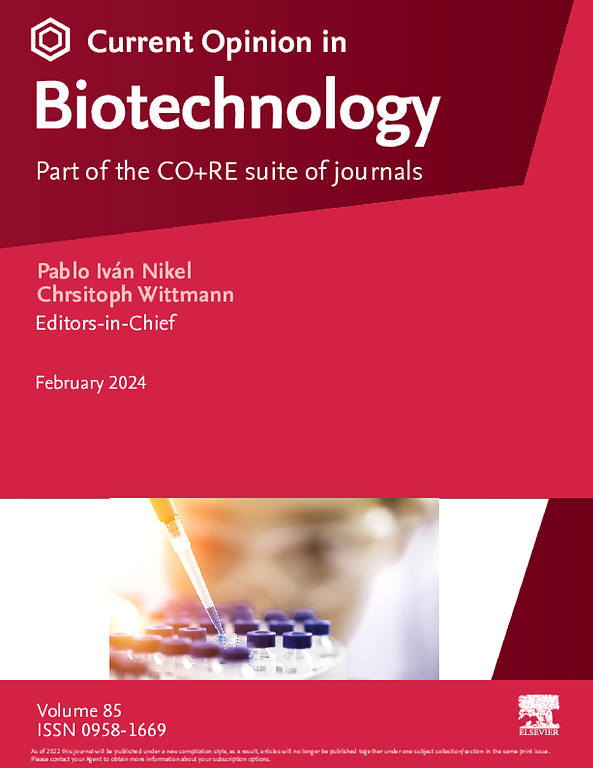为生物制剂和细胞疗法设计类 T 细胞受体抗体。
IF 7
2区 工程技术
Q1 BIOCHEMICAL RESEARCH METHODS
引用次数: 0
摘要
限制我们充分利用最新一代治疗性抗体潜力的一个主要挑战是,临床上确定的疾病特异性靶点很少。因此,下一步的主要工作就是扩大这一靶点的范围。最近,免疫疗法(如收养 T 细胞转移、免疫检查点抑制和嵌合抗原受体(CAR)T 细胞疗法)在临床上取得了成功,这有力地支持了将重点放在人类白细胞抗原(pHLA)呈现的肽的免疫肽组上,这些肽通常由 T 细胞受体(TCR)监测。针对 pHLA 靶点的新型抗体开发催生了类 TCR 抗体,它们作为双特异性 T 细胞参与抗体和 CAR-T 细胞疗法的 CAR,于 2020 年进入临床。在这篇综述中,我们将重点介绍 TCR 类抗体的最新进展,包括治疗模式、工程策略和成功基准。本文章由计算机程序翻译,如有差异,请以英文原文为准。
Engineering T-cell receptor–like antibodies for biologics and cell therapy
A major prevailing challenge limiting our ability to fully harness the potential of the latest-generation therapeutic antibodies is the scarcity of clinically established disease-specific targets. A major next step forward will therefore be to expand this target space. The recent clinical success of immunotherapies such as adoptive T-cell transfer, immune checkpoint inhibition, and chimeric antigen receptor (CAR) T-cell therapy strongly supports focusing on the immunopeptidome of peptides presented by human leukocyte antigen (pHLA) that are normally surveilled by T-cell receptors (TCRs). Directing novel antibody development toward pHLA targets has given rise to TCR-like antibodies, which reached the clinic in 2020, as both bispecific T-cell engaging antibodies and the CARs of CAR-T cell therapies. In this review, we highlight recent advances in TCR-like antibodies, including therapeutic modalities, engineering strategies, and benchmarks for success.
求助全文
通过发布文献求助,成功后即可免费获取论文全文。
去求助
来源期刊

Current opinion in biotechnology
工程技术-生化研究方法
CiteScore
16.20
自引率
2.60%
发文量
226
审稿时长
4-8 weeks
期刊介绍:
Current Opinion in Biotechnology (COBIOT) is renowned for publishing authoritative, comprehensive, and systematic reviews. By offering clear and readable syntheses of current advances in biotechnology, COBIOT assists specialists in staying updated on the latest developments in the field. Expert authors annotate the most noteworthy papers from the vast array of information available today, providing readers with valuable insights and saving them time.
As part of the Current Opinion and Research (CO+RE) suite of journals, COBIOT is accompanied by the open-access primary research journal, Current Research in Biotechnology (CRBIOT). Leveraging the editorial excellence, high impact, and global reach of the Current Opinion legacy, CO+RE journals ensure they are widely read resources integral to scientists' workflows.
COBIOT is organized into themed sections, each reviewed once a year. These themes cover various areas of biotechnology, including analytical biotechnology, plant biotechnology, food biotechnology, energy biotechnology, environmental biotechnology, systems biology, nanobiotechnology, tissue, cell, and pathway engineering, chemical biotechnology, and pharmaceutical biotechnology.
 求助内容:
求助内容: 应助结果提醒方式:
应助结果提醒方式:


